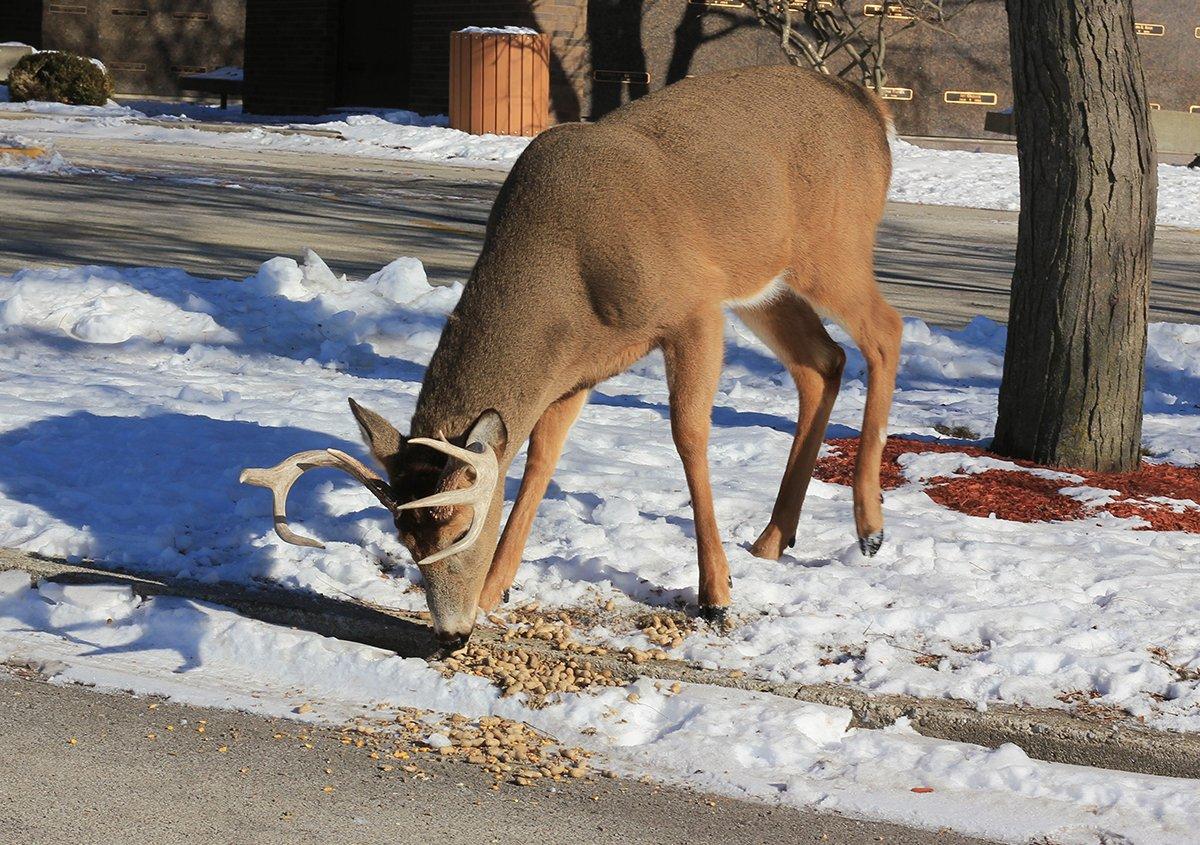A 12-step guide to shooting a big buck in town
Bowhunting in the suburbs has a near cult following, and for good reason. It's fun, and an effective way to tag some giant whitetails. Just take George Moore, Mark Hanaway, and Matt Myatt's bucks, for example. If hanging a stand and hunting in town interests you, here are a dozen tips to get you started.
1. Understand Dynamics
Hunting in urban and suburban settings has similarities to hunting in rural farm country. Deer are still deer. While city limit whitetails might act as if they tolerate humans, they don't. No matter where they call home, deer are incredibly adept at detecting things that are out of the norm. You might be hunting in someone's backyard, but deer will take notice of human behavior that's out of the norm.
2. Find Opportunities
Most urban and suburban hunting opportunities require private land permission. Some public lands exist, too, such as public parks and forests open to hunting. Quota hunts are common as well. Programs such as Minnesota's Metro Bowhunters Resource Base and Indiana's Community Hunting Access Program offer opportunity as well. Of course, most hunting apps offer public land layers that highlight many lands (but not all) that are open to hunting access.
3. Ask Around
Mature bucks are good at hiding, even in populated areas. But they're still seen in town, and people talk. Asking around can help you locate a monster buck you'd otherwise never know about. While talking to anyone in good neighborhoods can work, focus on those who drive a lot, such as mail carriers and bus drivers. These people cover a lot of ground, and they'll likely remember where they see big bucks and concentrations of deer. Drop pins on potential leads in your preferred hunting app.
(Don't Miss: The Sixth Sense, Part I: A Whitetail's Secret Weapon)
4. Search Apps
Cities and towns might seem to be mostly brick, mortar, and asphalt. But there are pockets of cover within city limits, and sometimes these are sizeable chunks of ground. In town, a 5-acre tangle of bedding cover could be as productive as a 200-acre farm out in the country. The best way to find these areas is via hunting apps. Look for habitat, drop some pins, and then move on to the next step.
5. Road Scout
Once you've secured some leads on big buck hotspots, or have located some pockets of interest, it's time to burn some fuel. Road scouting is sometimes frowned upon in rural settings, since people get suspicious of some rando parked on the side of the road glassing a 160 in someone's bean field, even if they don't have any ill intent. Things are different in the city. People do weird stuff all the time, and it's about the only way you can scout. You likely can't glass from a distance. So, you must blend in to stay off a deer's radar.
6. Get Permission
Once you've determined where you'd like to hunt, it's time to knock on doors. In areas where tracts are an acre or two, you might not need more than a few willing landowners. But if it's an area filled with ¼- to ½-acre lots, you might need to piece together numerous permissions to have enough to hunt. This is especially true if deer aren't making it to you in daylight.
It's also important for increasing your chances of recovering game. A wounded buck might cross several property lines before falling, and you need permission before crossing any of them. Of course, knowing the property boundaries before, during, and after the hunt is crucial for deer hunters of all kinds.
(Don't Miss: The Sixth Sense, Part II: A Deer Hunter's Intuition)
7. Pinpoint Patterns
City deer follow patterns just like their country cousins. Sometimes, city limit whitetails are even more predictable, especially if their lines of movement are restricted to only a few directions. Some hunters prefer to glass to determine these patterns. Other post cameras to monitor activity. Still, others hunt their way into an area to learn the herd's habits.
8. Fine Tune
It can take time to drill down on a buck's core area, even with limited cover options. Fine tune your entry routes, stand locations, and exit routes with each hunt. Moving just 5 or 10 yards can make the difference in getting busted, getting a shot, or not.
9. Use Calls
Calling can be especially important in the suburbs because of the property line issue. Unless piecing together a lot of properties, chances are good you'll see deer that are across property lines, where you can't shoot. Calling might be the only way to lure them into a spot where you can.
(Don't Miss: The Worst Trees for Treestands)
10. Stake Decoys
The same can be said for decoys. While I wouldn't draw attention from people, placing decoys in a manner that attracts deer can definitely boost the odds of getting a shot.
11. Be Stealthy
City deer might seem like they tolerate humans, but don't be fooled. These whitetails know the difference between the little old lady who waters her flowers every day at 3 p.m. and the camouflaged assassin who climbs trees. Always be stealthy and do your best to blend in with normal human activity for the area.
12. Retrieve Quickly
Be as respectful as possible to the neighborhood. Retrieve game quickly. Get it out discreetly. Don't be gruesome. Show hunting in a good light.
(Don't Miss: 30 Reasons You Won't Get Your Target Buck This Fall)












